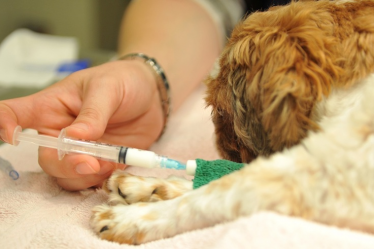
Raising a furry (or feathered) friend isn’t just about cuddles and tail wags. It’s also a commitment to their well-being, sometimes involving navigating the often-opaque world of pet insurance. Let’s face it: ‘How much is pet insurance?’ probably pops into every responsible pet parent’s mind at some point. But beyond the price tag, understanding pet insurance’s lingo is crucial for making informed decisions about your pet’s future health and financial security.
Decoding the Lingo: Key Pet Insurance Terms Explained
Coverage: This refers to the specific types of medical expenses your policy will cover. It can range from accidents and illnesses to routine care like vaccinations and preventative medications.
Premium: This is the monthly or yearly fee to keep your pet insurance active. Think of it like rent for your pet’s financial safety net.
Deductible: This is the amount you’ll pay out of pocket before your insurance kicks in. It’s like a small co-pay for each vet visit.
Reimbursement: This is the percentage of the remaining covered expenses that your insurance will pay back. Most plans offer a range of reimbursement levels, typically between 70% and 90%.
Annual limit: This is the maximum amount your insurance will pay annually. Choosing a plan with an annual limit that reflects your pet’s potential needs is important.
How much is pet insurance? Unpacking the Cost
Now that you’re armed with the basics, you’re probably wondering about the cost of pet insurance; the answer, unfortunately, isn’t as simple as a one-size-fits-all price tag. Several factors influence the cost of your pet insurance policy, including:
- Your pet’s species, breed, and age: Younger pets and certain breeds with a higher risk of health issues typically cost more to insure.
- The level of coverage you choose: Accident-only plans are cheaper than comprehensive plans that cover accidents and illnesses.
- The deductible and reimbursement levels: Higher deductibles and lower reimbursement percentages will bring down the cost of your premium.
- The location you live in: Vet costs can vary significantly depending on your location, impacting your insurance premiums.
Finding the Right Policy: Ask Yourself These Questions
Navigating the world of pet insurance can feel overwhelming, but don’t worry! By asking yourself the following questions, you can narrow down your options and find the perfect policy for your furry friend:
- What is my pet’s breed and age?
- What kind of coverage do I need? (Accident-only, accident and illness, preventative care)
- What deductible and reimbursement levels am I comfortable with?
- What is my budget for pet insurance?
- Are there any exclusions in the policy that might be deal-breakers? (Certain pre-existing conditions, elective procedures)
Beyond the Numbers: The Value of Pet Insurance
While the cost of pet insurance is important, it’s crucial to remember that it’s an investment in your pet’s health and well-being. Consider these additional benefits:
- Peace of mind: Knowing you’re financially prepared for unexpected vet bills can give you invaluable peace of mind.
- Better access to care: Pet insurance can encourage you to seek preventative care and address minor health issues before they become serious, potentially saving you money in the long run.
- Flexibility to choose the best care: With the financial burden lifted, you can focus on finding your pet’s best treatment options without worrying about the cost.
Conclusion: Speaking the Language of Pet Insurance
Understanding the language of pet insurance empowers you to make informed decisions about your pet’s healthcare and financial security. Remember, the cost of a policy is just one piece of the puzzle. Consider your pet’s needs, your budget, and the value of peace of mind when choosing a plan. With the right knowledge and policy, you can ensure your furry friend receives the best care without breaking the bank. Now, go forth and speak the language of pet insurance confidently – your furry friend will thank you for it!



